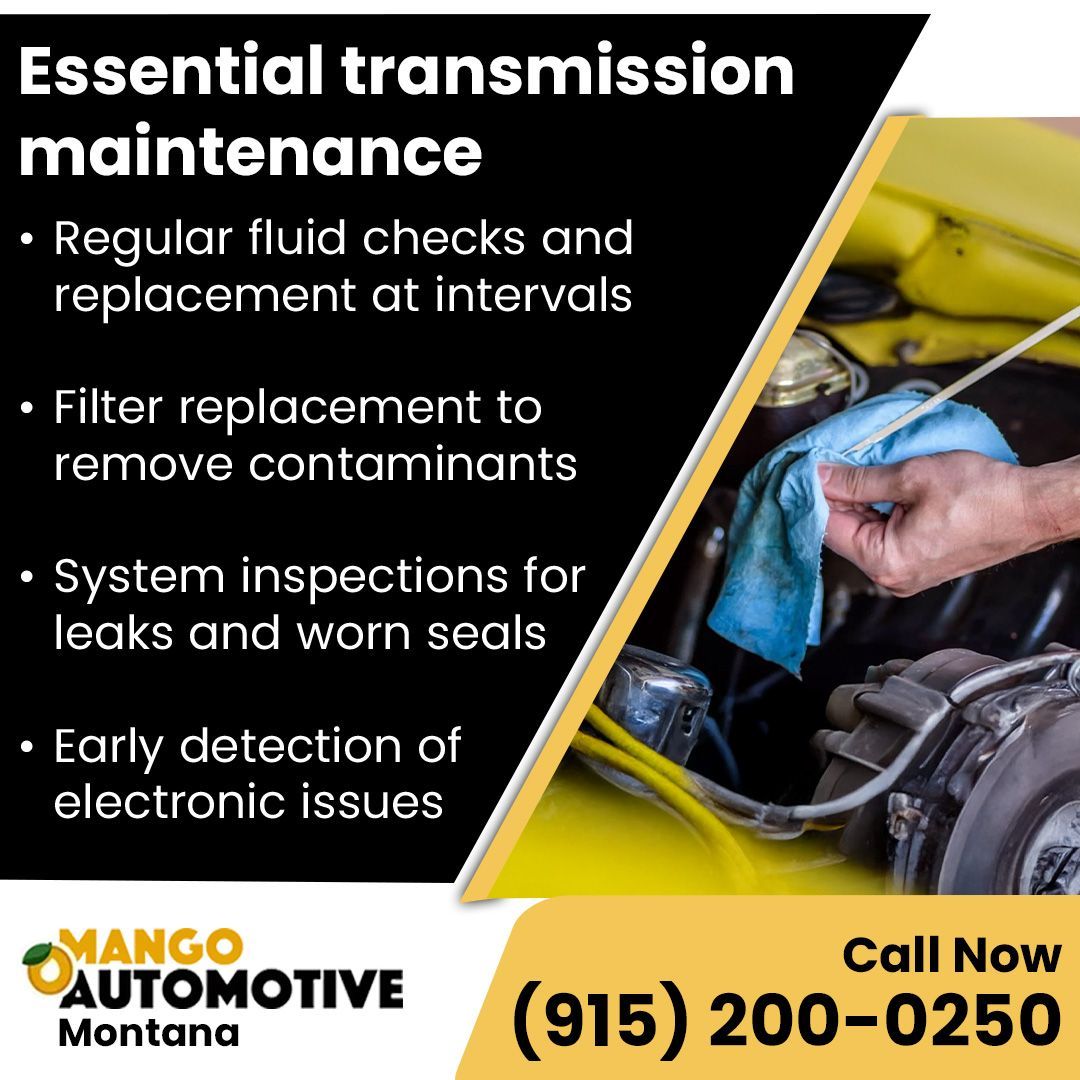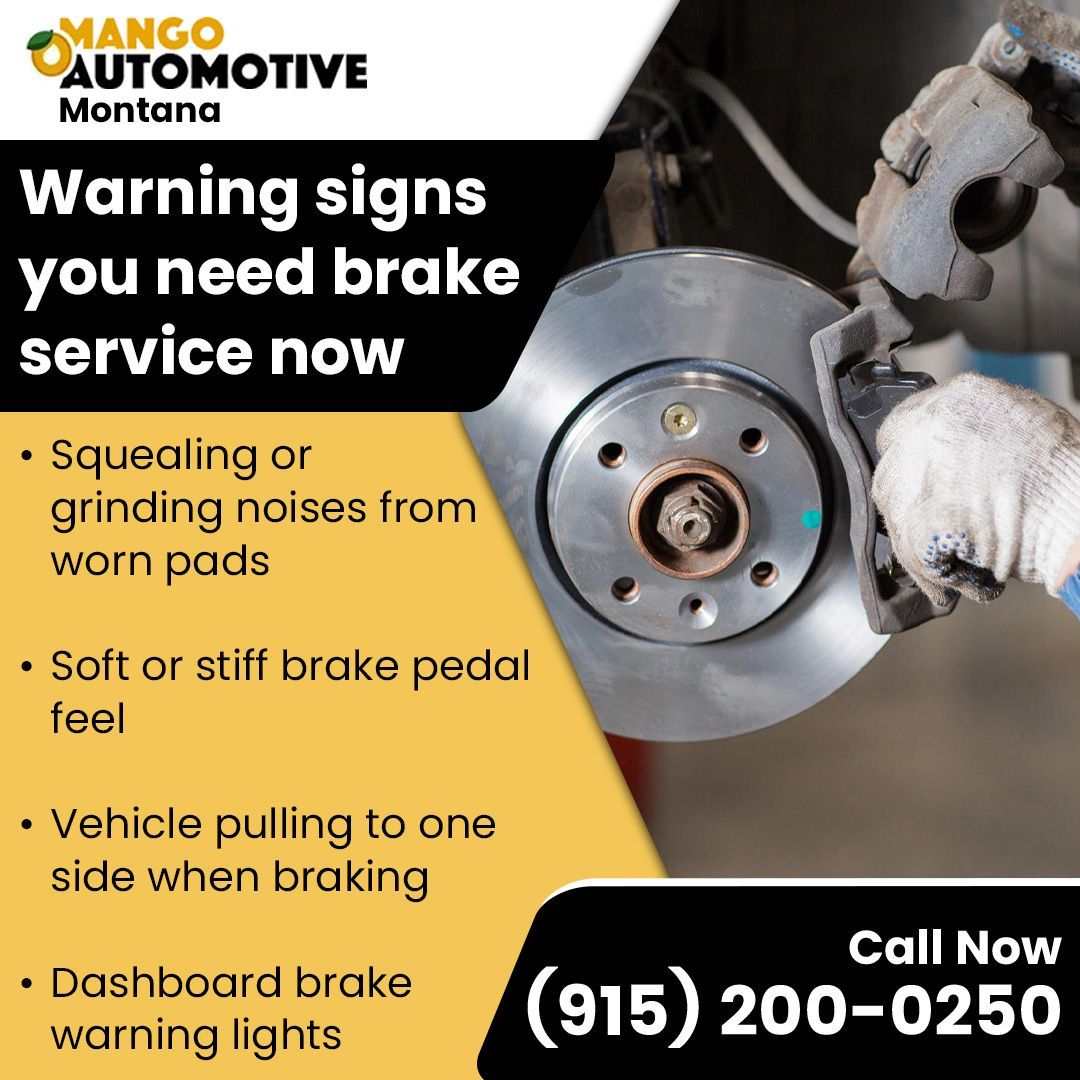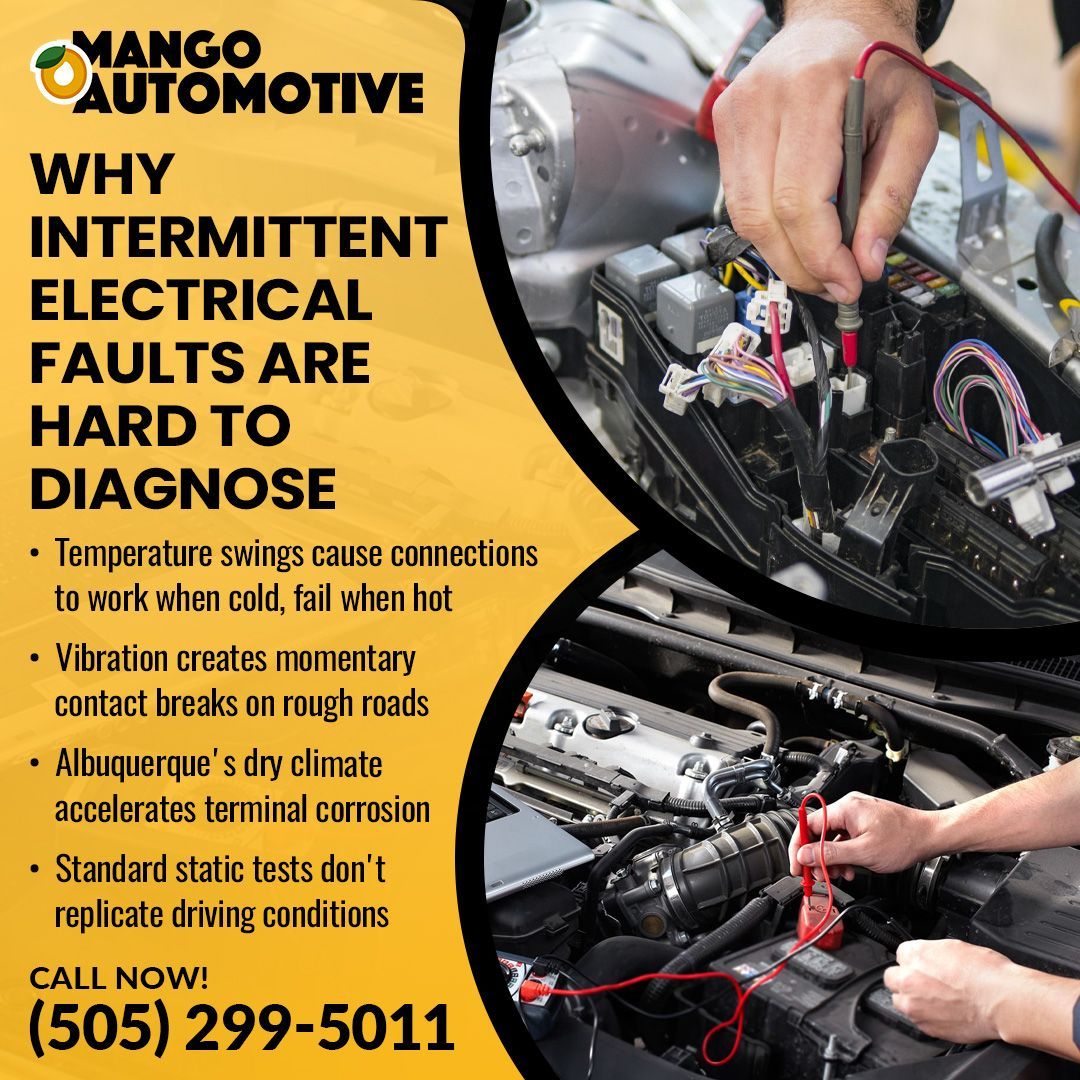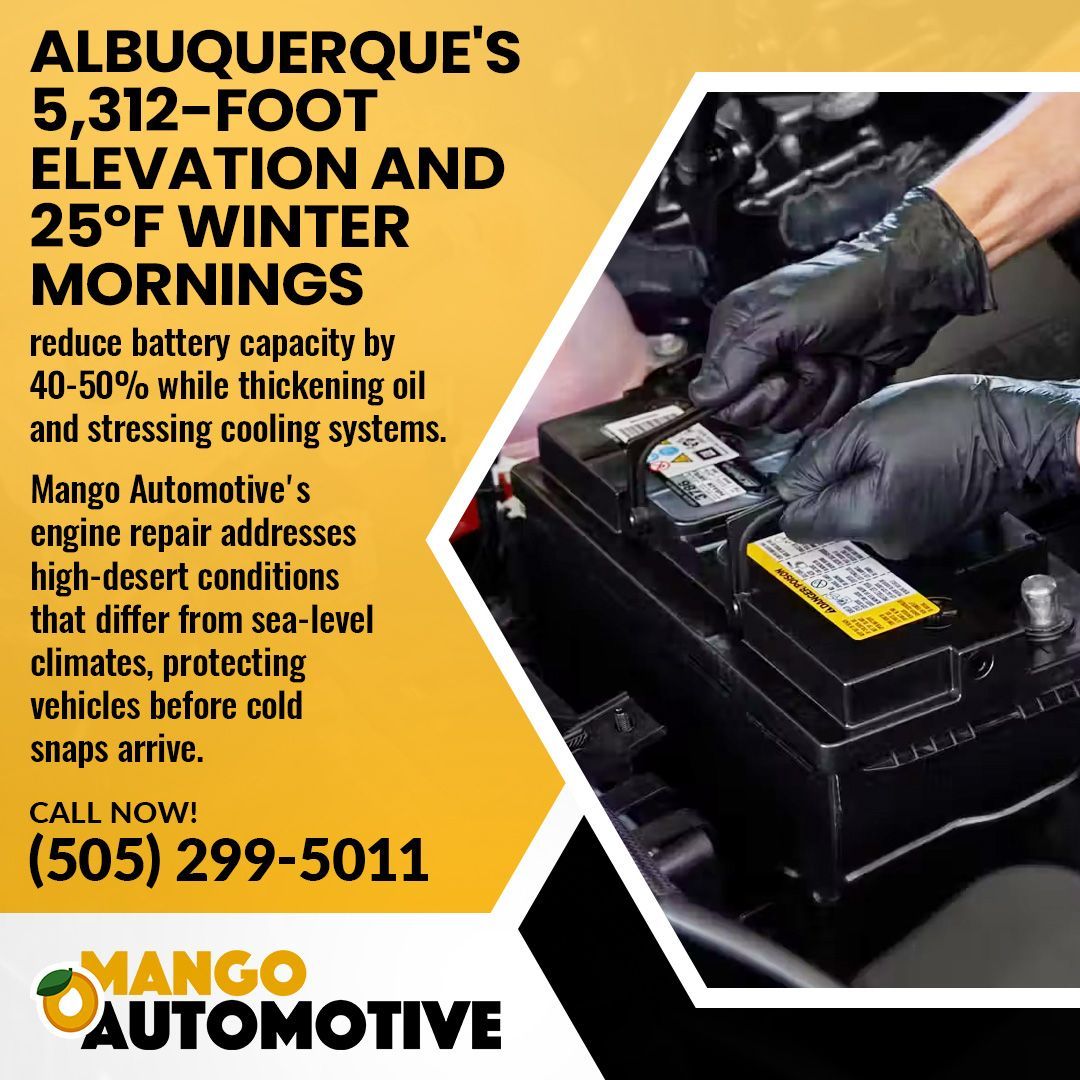Driving with a Faulty Transmission: What Auto Mechanics in Albuquerque Want You to Know
Driving with a malfunctioning transmission can pose significant safety risks, lead to expensive damage, and cause complete vehicle failure. What begins as a minor delay in gear shifting can quickly escalate to breakdowns, accidents, or harm to other drivetrain components.
At
Mango Automotive, our team collaborates with drivers to recognize early signs of transmission issues and address them before they worsen. If you're looking for skilled
mechanics in Eagle Ranch, we're here to assist with professional transmission repairs.

What the Transmission Does and Why It Matters
Role of the Transmission
The transmission controls how power from your engine reaches your wheels. Without it, your engine can’t properly move your vehicle. The transmission adjusts engine output to match road speed and driving conditions. It lets your car shift between gears to keep the engine running efficiently and prevent stalling.
Power Transfer from Engine to Wheels
The transmission links the engine to the drive wheels through a network of gears and shafts. In an automatic transmission, gear shifts occur without driver involvement. In manual transmission, the driver shifts manually using a clutch and gear lever. In both types, the goal is the same: to convert engine speed into usable motion at the wheels. If this power transfer system starts to fail, the engine may run, but your vehicle won’t move efficiently—or at all.
Gear Shifting and Engine Load Balance
Shifting gears balances engine load and maintains fuel efficiency. The transmission keeps the engine from working too hard or too little. It adjusts output based on speed, road incline, and the weight being carried.
If gears slip, stick, or hesitate, it can lead to reduced performance, overheating, or unexpected power loss. These are often the first warning signs that drivers bring to our mechanics in Albuquerque for inspection. By keeping the transmission in good shape, you avoid stress on the engine, save fuel, and reduce long-term repair costs.
How Automatic and Manual Transmission Can Fail Differently
Manual systems often fail due to worn clutches or linkage issues, while automatics can fail from fluid problems or sensor malfunctions. In manual cars, a slipping clutch, hard gear shifts, or grinding noises can point to problems. These issues often show up during gear changes or uphill driving. In automatic transmission, failures usually start with delayed shifting, sudden jerks, or fluid leaks. These may be caused by low transmission fluid, worn bands, or failing solenoids.
We’ve seen both types come into our shop with similar symptoms—loss of power, strange noises, or shifting problems—but the underlying cause depends on the type of transmission. That’s why an accurate diagnosis is key to preventing further damage.
Early Signs of Transmission Trouble
Slipping Gears
Slipping gears feels like the engine is revving, but the car isn't moving as it should. This can happen in both types of transmission systems. You might notice your car unexpectedly changes gears or struggles to stay in gear while driving. It often feels like the vehicle loses power, especially when accelerating or going uphill.
Slipping reduces control and can be dangerous in traffic or on inclines. In automatic systems, this may be caused by worn clutches or low transmission fluid. Manual systems might slip due to a damaged clutch or gear linkage issues.
If you’re in Albuquerque and noticing any of these signs, we recommend bringing your car to Mango Automotive. Our
auto mechanics in Albuquerque can inspect the system and recommend solutions before the issue worsens.
Delayed or Hard Shifting
Delayed or hard shifting means your car hesitates or jerks when changing gears. A vehicle with an automatic transmission may pause before moving forward or lurch when switching between gears. Manual transmissions might feel stiff or grind during gear changes.
Common causes of delayed or hard shifting include low or dirty transmission fluid, worn shift solenoids, or internal damage to gears. Hard shifting makes the vehicle less responsive and can stress other parts of the drivetrain. If you're noticing rough gear changes, it’s a good time to schedule an inspection.
Leaking Transmission Fluid
Transmission fluid leaks can leave reddish or brown puddles under your vehicle. When clean, transmission fluid has a reddish tint. Leaks typically appear near the front or middle of the vehicle, beneath the transmission housing. Leaks can be slow, but the damage adds up over time.
Low transmission fluid reduces lubrication. Without enough fluid, the internal parts grind against each other and cause the transmission to overheat. This can wear down gears, damage seals, and lead to complete transmission failure. Fluid loss also affects gear engagement and can cause slipping or erratic shifting.
Overheating or Burning Smell
A burning odor from under the hood may indicate transmission overheating. Transmission fluid degrades when temperatures rise too high. This reduces its ability to lubricate and cool the system, leading to internal damage. Drivers may also hear whining or clunking sounds as the issue progresses.
Possible causes of overheating transmission include blocked cooling lines, fluid leaks, or worn parts. Transmission coolers help maintain safe operating temperatures. If they’re blocked or leaking, heat builds up fast. Fluid that's old or contaminated loses its ability to protect internal parts.
At Mango Automotive, we’ve assisted numerous Albuquerque drivers in preventing major repairs by detecting cooling issues in transmission systems early. Routine checks can help maintain safe operating temperatures for the transmission.
Dashboard Warning Lights
Transmission warning lights mean the onboard system has detected a problem. Modern vehicles use sensors to track fluid pressure, temperature, and gear function. If something goes wrong, the dashboard will show a light—often shaped like a gear or check engine symbol.
Transmission control modules monitor gear shifts, pressure changes, and temperature. If the system sees something outside the normal range, like delayed shifting, high heat, or slipping, it triggers a warning. This allows technicians to run a diagnostic scan and pinpoint the issue.
At Mango Automotive, we use professional scan tools to interpret these codes and guide repairs. It's one of the ways our auto mechanics in Albuquerque help prevent long-term transmission damage.
What Can Happen If You Keep Driving
Complete Transmission Failure
If the transmission fails completely, the vehicle will lose its ability to move. You might hear loud clunking or grinding noises, experience total gear loss, or notice that the car may not respond at all when shifting. In some cases, the transmission locks up entirely, preventing the car from starting.
A full replacement is often required. For many vehicles, this can cost several thousand dollars and take several days, depending on parts and labor. At Mango Automotive, we help drivers weigh repair versus replacement options based on age, mileage, and condition.
Safety Hazards on the Road
A failing transmission can cause your car to stall unexpectedly. When gears slip or fail to engage, the vehicle may hesitate or stop responding to the throttle. This puts you and others at risk.
Unpredictable Gear Behavior
Erratic shifting makes it hard to control speed and acceleration. Your car might jump between gears, lose power suddenly, or refuse to shift altogether. This unpredictability affects your ability to react safely to changes in traffic or road conditions. These issues can lead to near misses or accidents. Our mechanics in Eagle Ranch often see this in vehicles that have ignored early warning signs.
Additional Damage to Other Systems
Strain on the Engine and Drivetrain
When the transmission struggles, the engine works harder to keep the car moving. This puts added stress on the engine mounts, axles, and driveshaft. It can make these parts wear out faster, resulting in frequent breakdowns and costly repairs.
Impact on Fuel Consumption
A failing transmission can prevent the engine from working efficiently and increase fuel use. When gears don’t shift at the right time, the engine may rev higher than needed. This burns more fuel and puts extra wear on components.
At Mango Automotive, our experienced auto mechanics in Albuquerque perform inspections to confirm the cause of the issue and restore performance.
Preventing Transmission Problems
Regular Maintenance
Routine transmission service keeps the system running properly and helps avoid early wear.
Fluid Changes and System Inspections
Transmission fluid cools and lubricates internal components. The fluid breaks down with use and collects debris. Dirty or low fluid can cause gears to grind, slip, or overheat. Replacing the fluid and inspecting the seals and filters during regular service helps prevent damage.
At Mango Automotive, our team of mechanics in Eagle Ranch checks the fluid condition and looks for early signs of wear during every visit. This keeps customers ahead of major repairs.
Manufacturer-Recommended Service Intervals
Following the service schedule from your car’s manufacturer protects your transmission in the long term. Most automakers recommend transmission service between 30,000 and 60,000 miles, but it depends on the vehicle and driving conditions. Frequent towing, city traffic, or long commutes can shorten that timeline. Transmission failures are often caused by missed fluid changes or inspections.
Catching Problems Early
Listening for Noises, Watching for Changes in Shifting
Unusual sounds, slow shifting, or odd vibrations often point to early transmission issues. These changes may seem minor at first but usually indicate that internal parts aren’t working smoothly. At Mango Automotive, we encourage customers to bring in their vehicles at the first sign of trouble to avoid costly repairs later.
Benefits of Proactive Service
Catching small issues early on avoids breakdowns, extends transmission life, and reduces repair costs. Fixing a fluid leak or replacing a worn sensor early costs far less than a rebuild or replacement. It also keeps your car safer and more reliable.
If you're not sure when your car was last serviced, our
mechanics in Albuquerque can check your service history and recommend the next steps. Preventive care makes a difference in how long your transmission lasts.
Mango Automotive for Transmission Repairs in Eagle Ranch
Certified Mechanics
Experience with All Makes and Models
Our mechanics in Eagle Ranch have worked on a wide range of vehicles, from everyday sedans to heavy-duty trucks. Our certified team at Mango Automotive knows how different transmission systems operate across domestic and import brands. Whether you drive a Toyota, Ford, Honda, or something less common, we understand the factory standards and repair methods. That means faster diagnosis, accurate repairs, and no guesswork.
Clear Explanations and Transparent Pricing
We explain what’s wrong, what it takes to fix it, and what it’s going to cost—before any work begins. We explain your options clearly and only recommend what your vehicle actually needs. Our quotes match our invoices—no inflated fees or surprises. This approach has made us a trusted name among auto mechanics in Albuquerque.
Convenient Scheduling
Fast Turnaround for Most Transmission Services
If you need fluid service, minor repairs, or a transmission check, we aim to get you back on the road quickly. We also keep customers updated during longer repairs, so you’re never left guessing. Even larger jobs like rebuilds or replacements are managed efficiently by our team of mechanics in Albuquerque.
Serving the Entire Albuquerque Area
Whether you live near Paradise Hills or Ventana Ranch, our shop is just minutes away. We also work with customers across the city who are looking for reliable, honest work from experienced mechanics in Albuquerque. At Mango Automotive, we take the stress out of car repair, starting with how we treat you and your time.

This is paragraph text. Click it or hit the Manage Text button to change the font, color, size, format, and more. To set up site-wide paragraph and title styles, go to Site Theme.














